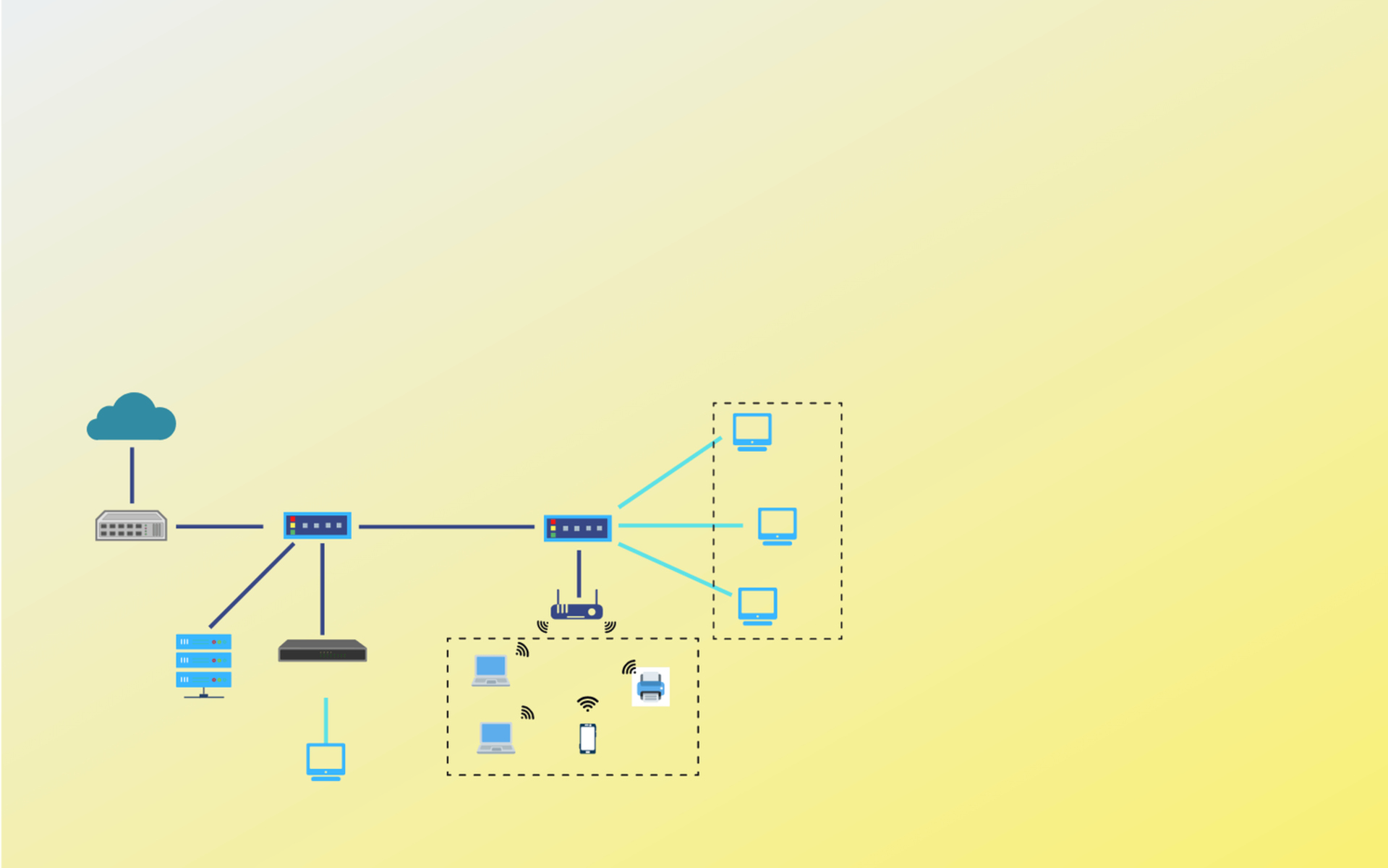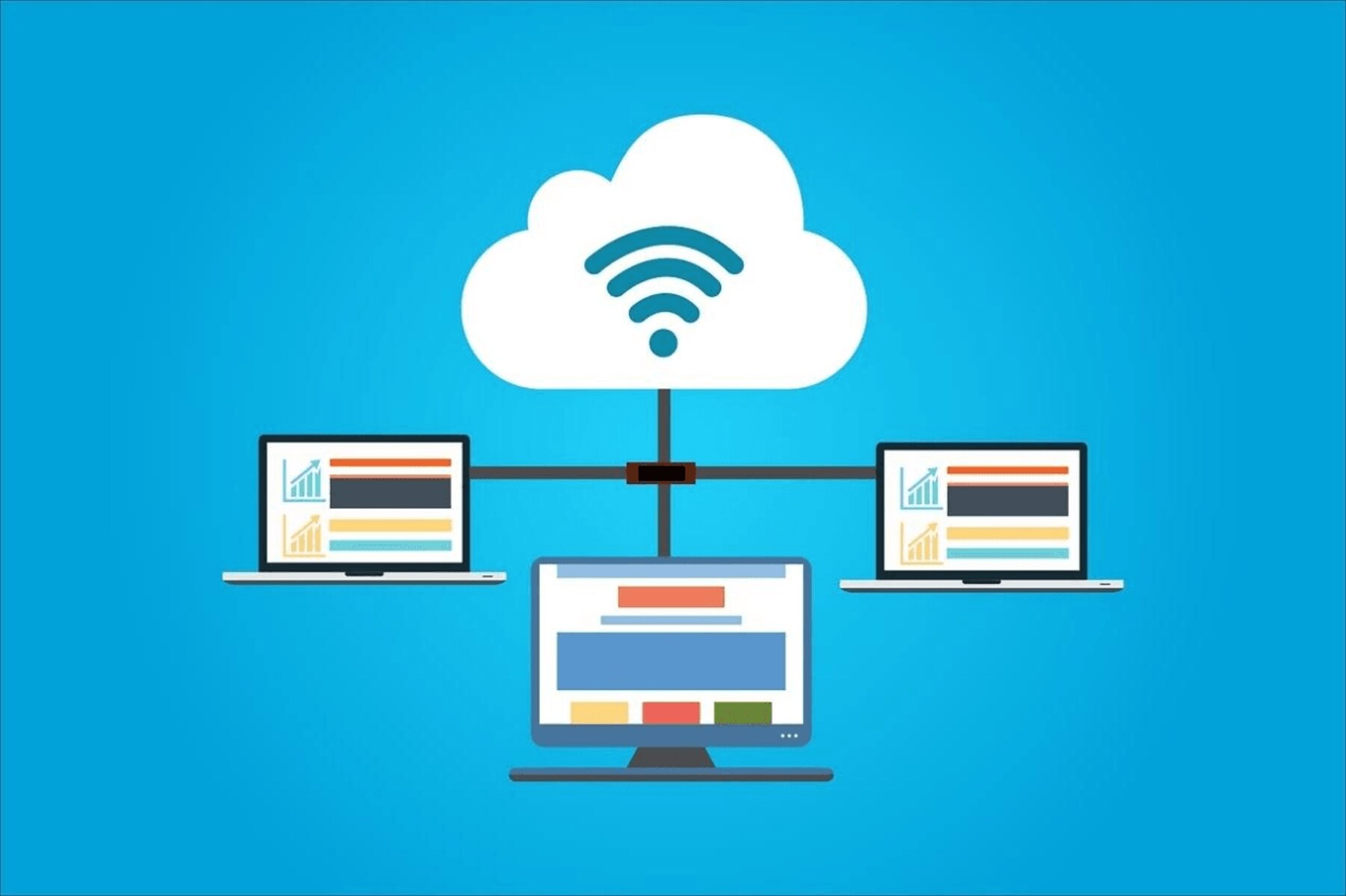Introduction
Welcome to the world of network filtering, where ensuring the security and efficiency of your network is paramount. In this digital age, every organization relies heavily on their network infrastructure to facilitate seamless communication, data sharing, and collaboration. However, there is always a need to control and manage access to resources within the network to maintain confidentiality, integrity, and overall network performance.
One solution that can significantly enhance network security is filtering based on the physical ID of each workstation. This type of filtering offers a robust approach to control access to network resources by allowing or denying access based on the unique identification of each workstation connected to the network. By utilizing this method, organizations can ensure that only authorized devices are allowed entry, reducing the risk of unauthorized access, data breaches, and other security threats.
Throughout this article, we will delve deeper into the concept of filtering based on the physical ID of each workstation. We will explore how it works, the benefits it brings to organizations, the common use cases, as well as the challenges and limitations that may arise when implementing this type of filtering. Additionally, we will provide insights on how to effectively implement this strategy to maximize its effectiveness in securing and managing your network.
Let’s dive in and explore the innovative world of filtering based on the physical ID of each workstation, and discover how it can revolutionize network security for your organization.
What Is Filtering Based on the Physical ID of Each Workstation?
Filtering based on the physical ID of each workstation is a technique used to control access to network resources by utilizing the unique identification of every workstation connected to the network. It allows organizations to define specific rules and policies that determine which workstations are granted or denied access to different network resources and services.
The physical ID of a workstation is typically derived from its hardware, such as the MAC (Media Access Control) address of the network interface card (NIC). The MAC address is a unique identifier assigned to every network device and is embedded in the hardware itself, making it difficult to tamper with or spoof.
By leveraging the physical ID of each workstation, network administrators can implement granular access control, allowing them to specify which workstations can access specific resources, such as servers, databases, printers, or even certain websites. This level of control enhances network security by minimizing the risk of unauthorized access or potential attacks originating from untrusted or compromised workstations.
This type of filtering can be implemented at different layers of the network stack, including the physical layer, data link layer, or network layer, depending on the specific network infrastructure and requirements of the organization.
It is important to note that filtering based on the physical ID of each workstation is just one method of access control and should be used in conjunction with other security measures, such as strong authentication mechanisms, encryption, and regular security audits, to create a comprehensive security framework.
Now that we have a clear understanding of what filtering based on the physical ID of each workstation entails, let’s explore how it actually works in practice.
How Does Filtering Based on the Physical ID of Each Workstation Work?
Filtering based on the physical ID of each workstation involves the use of network filtering mechanisms to analyze the MAC addresses of incoming network traffic and make access control decisions based on predefined rules and policies.
When a workstation attempts to connect to the network, it sends a signal to the network infrastructure. This signal contains the MAC address of the workstation’s network interface card (NIC). Network devices such as routers, switches, or firewalls can intercept and analyze this signal to determine whether the workstation’s physical ID is allowed access or not.
To implement filtering based on the physical ID of each workstation, organizations can utilize various network filtering technologies and protocols, such as Access Control Lists (ACLs), VLANs (Virtual Local Area Networks), or firewall rules.
Access Control Lists (ACLs) are a common mechanism used in routers and switches to filter network traffic based on different criteria, including MAC addresses. By defining ACL rules, network administrators can permit or deny specific MAC addresses from accessing certain resources or network segments. This helps to prevent unauthorized workstations from accessing critical infrastructure or compromising sensitive data.
VLANs (Virtual Local Area Networks) provide a way to logically segregate a physical network into smaller virtual networks. By assigning workstations to specific VLANs and configuring access control rules at the VLAN level, network administrators can control which workstations are allowed to communicate with each other and access resources within their respective VLANs.
Firewalls also play a crucial role in implementing filtering based on the physical ID of each workstation. Firewalls can examine incoming and outgoing network traffic based on MAC addresses and apply filtering rules accordingly. This helps to enforce network security policies and protect against malicious activities.
Organizations can choose to implement these filtering mechanisms individually or in combination, depending on their specific requirements and infrastructure. By leveraging these technologies, network administrators can exert granular control over which workstations are permitted or denied access to different areas of the network, providing a robust layer of security.
In the next section, we will explore the numerous benefits that filtering based on the physical ID of each workstation brings to organizations.
Benefits of Filtering Based on the Physical ID of Each Workstation
Implementing filtering based on the physical ID of each workstation offers several significant benefits for organizations seeking to enhance their network security and overall operational efficiency.
Enhanced Network Security: One of the key advantages of filtering based on the physical ID of each workstation is its ability to strengthen network security. By allowing only authorized workstations with valid physical IDs to access network resources, organizations can significantly reduce the risk of unauthorized access, data breaches, and other security threats. This type of access control helps create a robust security perimeter, ensuring that only trusted devices are granted network access.
Granular Access Control: Filtering based on the physical ID of each workstation allows network administrators to define specific rules that govern which workstations can access particular resources or areas of the network. This granularity of access control ensures that only authorized users and devices can access sensitive data or critical infrastructure. It helps organizations enforce security policies and maintain compliance with regulatory requirements.
Improved Network Performance: By implementing this type of filtering, organizations can optimize their network performance. Filtering based on physical IDs helps to eliminate unnecessary network traffic by preventing unauthorized workstations from accessing resources they do not require. This reduces network congestion, enhances overall bandwidth utilization, and improves the responsiveness and efficiency of the network.
Easy Device Management: Filtering based on the physical ID of each workstation simplifies device management for network administrators. With this filtering in place, administrators can easily identify and track individual workstations connected to the network. It streamlines the process of adding or removing workstations from the network and ensures that only authorized devices are granted access, reducing the administrative overhead and enabling more efficient device management.
Protection against Network Attacks: Filtering based on the physical ID of each workstation acts as an additional layer of defense against network attacks. By denying access to workstations with unknown or unauthorized physical IDs, organizations can prevent malicious actors from gaining entry to the network. It helps fend off various types of attacks, such as MAC address spoofing or unauthorized device connections, strengthening the overall network security posture.
Filtering based on the physical ID of each workstation offers a range of benefits, including enhanced network security, granular access control, improved network performance, simplified device management, and protection against network attacks. These advantages make it an essential component of comprehensive network security strategies.
In the next section, we will explore common use cases where filtering based on the physical ID of each workstation can be effectively deployed.
Common Use Cases for Filtering Based on the Physical ID of Each Workstation
Filtering based on the physical ID of each workstation can be applied to various scenarios and use cases where controlling access to network resources is crucial. Let’s explore some common scenarios where this type of filtering is highly beneficial:
Secure Remote Access: When organizations provide remote access to their network resources, such as through Virtual Private Networks (VPNs), filtering based on the physical ID of each workstation can ensure that only authorized remote devices can connect to the network. It adds an extra layer of security by verifying the physical ID of the remote workstation before granting access.
Guest Network Access: Many organizations offer guest networks, allowing visitors or temporary employees to connect to the network. Filtering based on the physical ID of each workstation enables organizations to create a separate guest network and ensure that only authorized guest devices with valid physical IDs can access this network. This prevents unauthorized devices from connecting to the main corporate network.
IoT Device Security: The proliferation of Internet of Things (IoT) devices brings new challenges to network security. Filtering based on the physical ID of each workstation helps secure IoT devices by allowing only approved devices with valid physical IDs to connect to the network. This safeguards against unauthorized access or potential attacks originating from compromised IoT devices.
BYOD Environments: In Bring Your Own Device (BYOD) environments, where employees use their personal devices to connect to the corporate network, filtering based on the physical ID of each workstation ensures that only authorized employee devices with valid physical IDs are granted access. This helps protect against unauthorized devices connecting to the network and reduces the risk of data breaches or security incidents.
Network Segmentation: Organizations often segment their networks to enhance security and control access to specific resources. Filtering based on the physical ID of each workstation can be used to create VLANs or subnet-based access controls, allowing only authorized workstations with valid physical IDs to communicate within specific segments, providing a secure and controlled environment.
These are just a few examples of the common use cases where filtering based on the physical ID of each workstation can be implemented. By leveraging this type of filtering, organizations can ensure a secure and controlled network environment that aligns with their specific requirements and enhances overall network security.
Next, we’ll explore the challenges and limitations that should be considered when implementing filtering based on the physical ID of each workstation.
Challenges and Limitations of Filtering Based on the Physical ID of Each Workstation
While filtering based on the physical ID of each workstation offers numerous benefits, there are also some challenges and limitations that organizations should be aware of when considering its implementation:
MAC Address Spoofing: One of the main challenges is MAC address spoofing, where attackers mimic the MAC address of an authorized workstation to gain unauthorized access. Although MAC address spoofing is difficult to execute, it is not impossible. Organizations should implement additional security measures, such as strong authentication mechanisms, to mitigate this risk.
Complex Network Infrastructure: Organizations with complex network infrastructures may face challenges in implementing and managing filtering based on the physical ID of each workstation. Maintaining an accurate inventory of physical IDs and ensuring consistent enforcement across various network devices can be challenging and time-consuming.
Network Changes and Updates: Network changes and updates, such as adding new workstations or replacing hardware, can impact the effectiveness of filtering based on physical IDs. It is essential to have proper procedures in place to update and synchronize the physical ID filtering rules whenever network changes occur.
Administrative Overhead: Managing the filtering policies for each workstation can incur administrative overhead. Assigning and maintaining physical IDs for each workstation, keeping track of changes, and ensuring policy consistency requires ongoing attention and effort from network administrators.
Limited Scalability: Filtering based on the physical ID of each workstation may encounter scalability issues in large networks with a significant number of workstations. Implementing and managing filtering rules for a large number of devices can become challenging, and the performance of network devices responsible for filtering may be affected.
Hardware Dependency: Filtering based on the physical ID of each workstation relies on the hardware-specific MAC address. In cases where hardware is replaced or the MAC address is changed, the filtering rules may need to be updated accordingly to ensure continued access for the workstations.
Despite these challenges and limitations, implementing filtering based on the physical ID of each workstation can still provide significant benefits in terms of network security and granular access control. Organizations should evaluate these challenges in the context of their specific network environment and consider how to mitigate them effectively.
In the next section, we will discuss how to implement filtering based on the physical ID of each workstation successfully.
How to Implement Filtering Based on the Physical ID of Each Workstation
Implementing filtering based on the physical ID of each workstation requires careful planning and execution to ensure its effectiveness in securing the network. Here are some essential steps to follow when implementing this type of filtering:
1. Identify Network Resources: Begin by identifying the critical network resources that need protection. Determine which resources should only be accessible by authorized workstations with valid physical IDs.
2. Inventory Workstations and Assign Physical IDs: Create an inventory of all workstations connected to the network and assign a unique physical ID to each workstation. This identification can be based on the MAC address of the workstation’s network interface card (NIC).
3. Define Filtering Policies: Define clear rules and policies that govern which workstations are allowed or denied access to specific network resources. These policies can be implemented using network filtering technologies such as Access Control Lists (ACLs), VLANs (Virtual Local Area Networks), or firewall rules.
4. Configure Network Devices: Configure the network devices responsible for enforcing the filtering policies. This includes routers, switches, firewalls, or any other network devices that support filtering based on physical IDs. Ensure that the filtering rules are correctly implemented and applied at the appropriate network layers.
5. Test and Verify: Test the filtering implementation by attempting to connect various workstations to the network resources. Verify that only authorized workstations with valid physical IDs can access the intended resources, while unauthorized workstations are denied access.
6. Update and Maintain: Regularly update the filtering policies and physical ID assignments as the network evolves, new workstations are added, or existing hardware is replaced. Maintain an accurate inventory of workstations and continuously monitor the effectiveness of the filtering implementation.
7. Monitor and Audit: Implement a monitoring and auditing mechanism to track and analyze network traffic, ensuring that the filtering based on physical IDs is functioning as intended. Monitor for any unauthorized access attempts or anomalies in network traffic patterns.
By following these steps, organizations can successfully implement filtering based on the physical ID of each workstation and enhance network security. It is essential to regularly review and update the implementation to adapt to evolving network needs and mitigate any potential security risks that may arise.
In the concluding section, we will recap the key points discussed in this article and emphasize the importance of filtering based on the physical ID of each workstation in securing network resources.
Conclusion
Filtering based on the physical ID of each workstation is a powerful technique for controlling access to network resources and enhancing network security. By leveraging the unique identification of each workstation, organizations can enforce granular access control, improve network performance, and protect against unauthorized access and attacks.
In this article, we explored the concept of filtering based on the physical ID of each workstation, discussing how it works, the benefits it brings, common use cases, challenges, and limitations, as well as implementation best practices.
By implementing this type of filtering, organizations can enjoy enhanced network security, as only authorized workstations with valid physical IDs are granted access to critical resources. It also provides granular control, allowing administrators to define specific rules for different workstations and network segments.
While there are challenges and limitations to consider, such as MAC address spoofing and administrative overhead, they can be mitigated through proper security measures, effective device management, and continuous monitoring.
As technology continues to evolve and networks become increasingly complex, filtering based on the physical ID of each workstation remains a vital component of network security strategies. It adds an additional layer of defense, protects against unauthorized access, and provides organizations with greater control over their network resources.
In conclusion, filtering based on the physical ID of each workstation empowers organizations to maintain a secure and efficient network environment. By implementing this technique and staying vigilant in the face of evolving threats, organizations can safeguard their valuable assets, protect sensitive data, and ensure the integrity and performance of their networks.

























